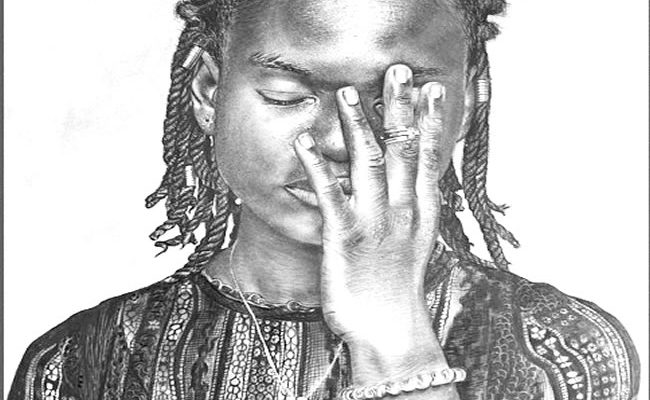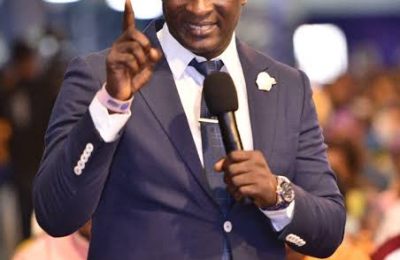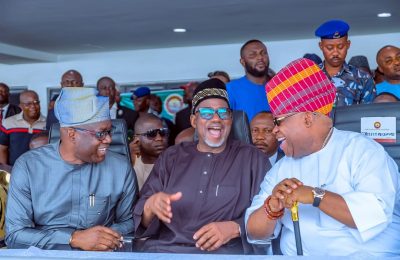

Portrait artist Oluwafemi Omoboriowo’s works depict emotions and thoughts that urge art lovers to look beyond aesthetics.
THOUGH portrait art appears common among artists, there is more than aesthetics beneath the concept and thought of every subject, so explain the works of Oluwafemi Omoboriowo. From depicting emotions and thoughts, he keeps challenging art lovers to always look beyond aesthetics.

Omoboriowo, who describes himself as an artist constantly commissioned by individuals and corporate groups, also ensures that art comes first, against the dictates of whoever requests him to make a portrait. While some of his commissioned works are not exposed to critique, the artist’s other non-commissioned pieces are reflections of the private works he has done.
Critics always argue that the mastery of portrait art lies in how an artist separates critical art content from commercial values. Can the artist in Omoboriowo pass this crucial critical test?
A 2020 dated piece titled ‘The Gaze of Resilience’ provides an insight into the artist’s character of floating over the challenge of not being caught stranded between critical and commercial art. The man’s blank expression suggests meditation, as the subject’s fixed look creates curiosity.
Omoboriowo explains that his intention with ‘The Gaze of Resilience’ was to depict a silent moment of strength as an African man. “I explored the nuances of expression and detail that words could never communicate using the hyper-realistic pencil method. The man, wearing a flat cap, is looking off to the left rather than directly at the observer, his expression fixed in a straight, unyielding line,” he added. “It was a purposeful decision to have him turn away. It suggests reflection, possibly taking a moment to think about the past or the future. The flat cap is a culturally and historically significant accessory that lends individuality and background, suggesting a life of quiet dignity.”
Could age or generational identity in fashion affect how artists capture their subjects’ moods and expressions? This question crosses one’s mind with the fashion sense in Omoboriowo’s ‘The Gaze of Resilience’. In Nigeria, specific fashions are, rightly or wrongly, attached to elderly persons. For example, the “flat cap” worn by the artist’s subject is regarded as elderly, old-fashioned in Nigeria. But the subject depicts a young man, who in contemporary fashion wouldn’t adorn such a cap, instead a face cap or baseball cap.
However, the place of fashion in depicting mood appears less emphasised for the artist. His focus is mainly on the art of capturing expressions and moods. “The subject maintains a sense of mystery by not engaging directly with the audience. It encourages the viewers to consider what lies beyond the gaze,” he stated in a text attached to the portrait. “Is he meditating on a personal journey, contemplating issues, or simply pausing in an ever-changing world? His countenance conveys resilience, persistence in life’s challenges, and stoic acceptance of whatever comes next.”
Still, on expression and moods, another piece titled ‘Beyond the Laughter’ exposes Omoboriowo as an artist to watch in the mastery of conceptual portraits. In depicting what he describes as comedians’ dilemma off the stage, Omoboriowo updated the fashion to the contemporary period of the subject compared to ‘The Gaze of Resilience’. For ‘Beyond the Laughter’, Omoboriowo enhances the unseen emotions of the comedian with fashion statements in dreadlocks and earring pieces. The combination strengthens the contemporary era that most young persons can identify with.
Omoboriowo’s bio described him as a hyper-realistic pencil artist with a deep love for drawing from childhood. Following his artistic path, he studied Fine and Applied Arts at the Obafemi Awolowo University, where he specialised in painting, formalising his skills. He further honed his craft as an Assistant Lecturer in the Federal University of Lafia Fine Arts department. This rich academic and professional background affirms his expertise in art.
While charcoal and graphite pencils remain his chosen mediums, Omoboriowo is a versatile mixed-media artist who creates highly detailed pieces. His adaptability and range of skills are a testament to his artistic versatility. Currently pursuing a master’s degree in art at Teesside University in the UK, he is further honing his skills and broadening his knowledge, showcasing his commitment to continuous growth and learning.
Significant achievements and milestones mark his career. As an Assistant Lecturer in the Fine Arts department at the Federal University, Lafia, he has shared his knowledge and passion for art with others. His work has been exhibited at prestigious events such as the Bigartfestival in Stockton-on-Tees, UK, and the Boomer Gallery (The New Artist seventh edition). He has also participated in the Boomer Art Prize – third edition (Boomer Gallery), further solidifying his position as an artist to watch. He was among the 50 winners in the competition whose works will be featured in the Boomer Gallery Magazine, led by the world-renowned Anthony Fawcett as editor-in-chief.
READ ALSO: Fuel hike: Tinubu’s govt insensitive to Nigerians’ plight — Obi








